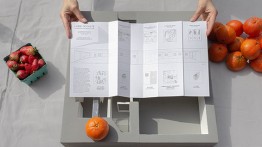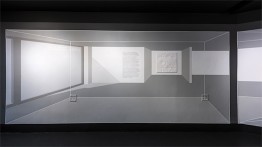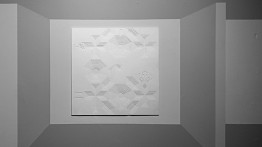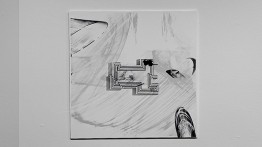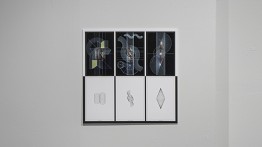Linee Occulte: Drawing Architecture
POSTED ON: April 23, 2021
Citygroup is far from a white cube gallery. Studio Ames’ curatorial approach to the exhibition “Linee Occulte: Drawing Architecture,” highlights this fact while marking its own territory in such a way as to make visible the undercurrents for which the exhibition space formed as a response. As presented on their website, Citygroup was “formed to challenge the structural and cultural forces that shape the normative practices of architecture. […] We are unwilling to defer to the status quo of capitalist political economy and believe we must interrogate the conditions that subjugate, alienate, and appropriate architects, architecture, and inhabitants of architecture.” Not to bank on the intention of the gallery’s name as a phonetic riff, but the play on words is helpful in understanding the meaning spaces can inflect to encompassing structures and forces - such as finance, or a pandemic. Studio Ames' exhibition design and curation deploys Trompe l’oeil throughout the space as such an inflection that demarcates a space within a space and continues this logic so as to involve each drawing in a dialogue of hidden, yet visible, lines.
As explained in the curatorial statement by Studio Ames:
“In Book II on perspective, Sebastiano Serlio referred to an “unthought known” in architectural production. He referred to certain lines as: “linee occulte,” hidden lines. These hidden lines are akin to construction lines in architectural drafting, the lines necessary to conceive of the final form. Serlio describes the process of drawing forms in perspective. Unlike Alberti, he accompanies his text with drawing examples, and from one drawing to the next, certain lines appear and disappear. The ones that disappear are presumably not necessary in communicating the next step and they become a kind of lost history to drawing making. In a time when we are contending with many shared and lost histories, what importance do the lines of the past, hidden out of view, have on our process? This is the question that Linee Occulte: Drawing Architecture asks participants and viewers to consider.”
Presenting drawings within the context formed by their common theme and exhibition design, "Linee Occulte: Drawing Architecture" gives us the opportunity to see the work of Daisy Ames, Iman Fayyad, Lindsay Harkema, Kevin Hirth, Alfie Koetter, Stephanie Lin, Melissa Shin, Lindsey Wikstrom, and Mersiha Veledar as a collaborative construction.
When asked about her take on the exhibition, Stephanie Lin observed that “Linee Occulte asks us to refocus our attention to the elements, processes, forms, and structures that are underperceived, as an architectural and social agenda that are one in the same. In its exhibition design by Studio Ames, uncovering these relationships between the visible and the suppressed is meaningfully rendered through overlaid perspectives that are both continuous and multiple across the gallery space.” One may notice in Lin’s response a hint of creative tension between the “visible and the suppressed” or, likewise with Mersiha Veledar, as she adds in agreement that “[t]he unique concepts (and methods of representation) by each participant emerge within the limits of individual square tablets and amidst the matrix of precise lines Daisy carefully maps out on the surface of the walls, revealing once again the hidden in-situ context of the space beyond.” These emergent creative tensions perform a conceptual and perceptual push-and-pull between say, formal elements such as lines and proprioception —think social distancing— or between what one sees and knows. That this effect is part and parcel of the construction of a drawing, or the atmosphere and meaning of a social space is one of the many joys, along with the unique creative accomplishments by each participant, that this exhibition offers.

